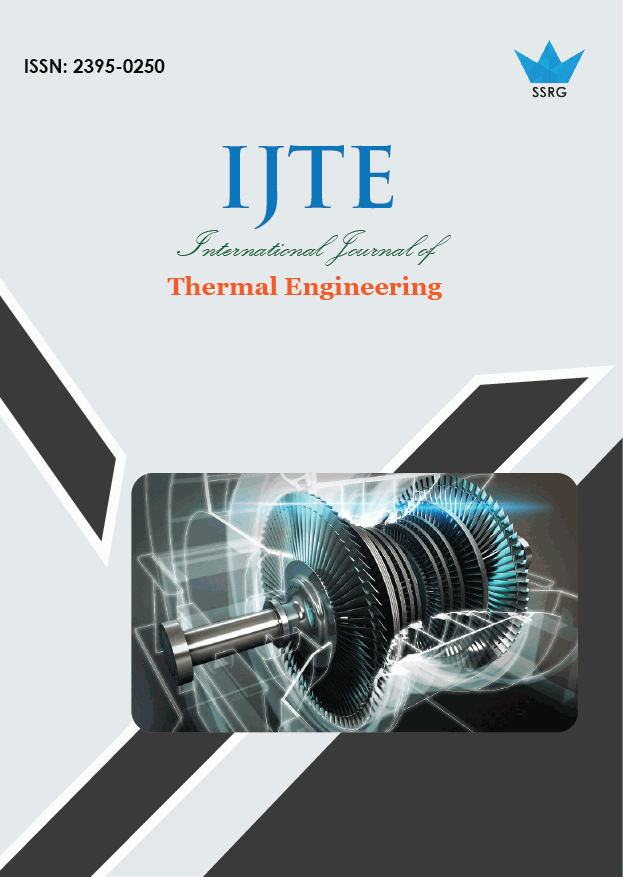Pessimistic Possessions of Grave Metals in Medicinal Flora

| International Journal of Thermal Engineering |
| © 2015 by SSRG - IJTE Journal |
| Volume 1 Issue 2 |
| Year of Publication : 2015 |
| Authors : Dr.M.Rajikumar, G.Sathish |
How to Cite?
Dr.M.Rajikumar, G.Sathish, "Pessimistic Possessions of Grave Metals in Medicinal Flora," SSRG International Journal of Thermal Engineering, vol. 1, no. 2, pp. 38-42, 2015. Crossref, https://doi.org/10.14445/23950250/IJTE-V1I3P105
Abstract:
In this paper describe the exploit of medicinal plants and their extracts, justify a detach psychoanalysis, due to the momentous collision they have creature. To make ensure that they are not contaminated with toxic metals throughout the enlargement and dispensation of medicinal plants. The intend of this revise was to accomplish a high degree of quantitative toxic elements (Cr, Cu, Zn, Mn, Pb, As) in medicinal plants such as Lamium. In the fashionable convention known as the emperor of medicinal plants which are often used in green salads or cooked variety. Neem harvests are also worn in selectively scheming pests in plants. Neem oil is use for preparing cosmetics and is constructive for skin care such as acne handling. Neem oil has been used efficiently as a mosquito repellent. To characterize essentials with inductively Coupled Plasma Mass Spectrometry method. The pleased of profound metals in medicinal therapeutic plants is desiccated and turned into residue form, was in order: Zn> Mn> Cu> Cr> Pb> Hg> Pb. reasoned outcome show that the herbal medicinal products show a heavy metal reassign from plants to humans. Monitoring the content of mineral essentials in medicinal plants and their extracts is of scrupulous importance for health. It is imperative, because some heavy metals in large quantities in the body, the use of therapeutic herbs, can have a toxic achieve; the population is very detrimental and longterm adverse effect.
Keywords:
Heavy metals, Medicinal plants, Nettle, Neem.
References:
1. Adem Dreshaj, Hidajete Nikqi, Hysen Muzlijaj, F. Fekaj and I. Beqiraj , Negative Effects of Heavy Metals in Medicinal Plants, International Journal of Thermal
Technologies, Vol.3, No.3, pg no: 60-62, 2013.
2. Bratli L.J, Classification of the Environmental Quality of Freshwater in Norway: Hydrologicaland limnological aspects of lake monitoring. John Willey &Sons Ltd, 2000.
3. A.H. Weerts, Analytical models for chemical transport on the subsurface environment, Wageningen Agricultural, 1994.
4. University, Department of Water Resources, Wageningen, the Netherland.
5. B.G.Skakalsky, Study of anthropogenic influence on water quality in some rivers of the Baltic Sea Basin, State Hydrological Institute, 2nd line, 199053, Leningrad,
U.S.S.R, 1981.
6. Brebbia, C.A.Skerget, P., Diffusionconvection problems using boundary elements, in Laible, J.P., Brebbia, C.A., Gray, W., Pinder, G. (Eds),Finite Elements
in Water Resources V, Springer-Verlag, Berlin, pp.74768, 1984.
7. C.P. Kumar, Groundwater flow models, Scientist ‘E1’, National Institute of Hydrology, Roorkee-247667 (UK), 2013.

 10.14445/23950250/IJTE-V1I3P105
10.14445/23950250/IJTE-V1I3P105